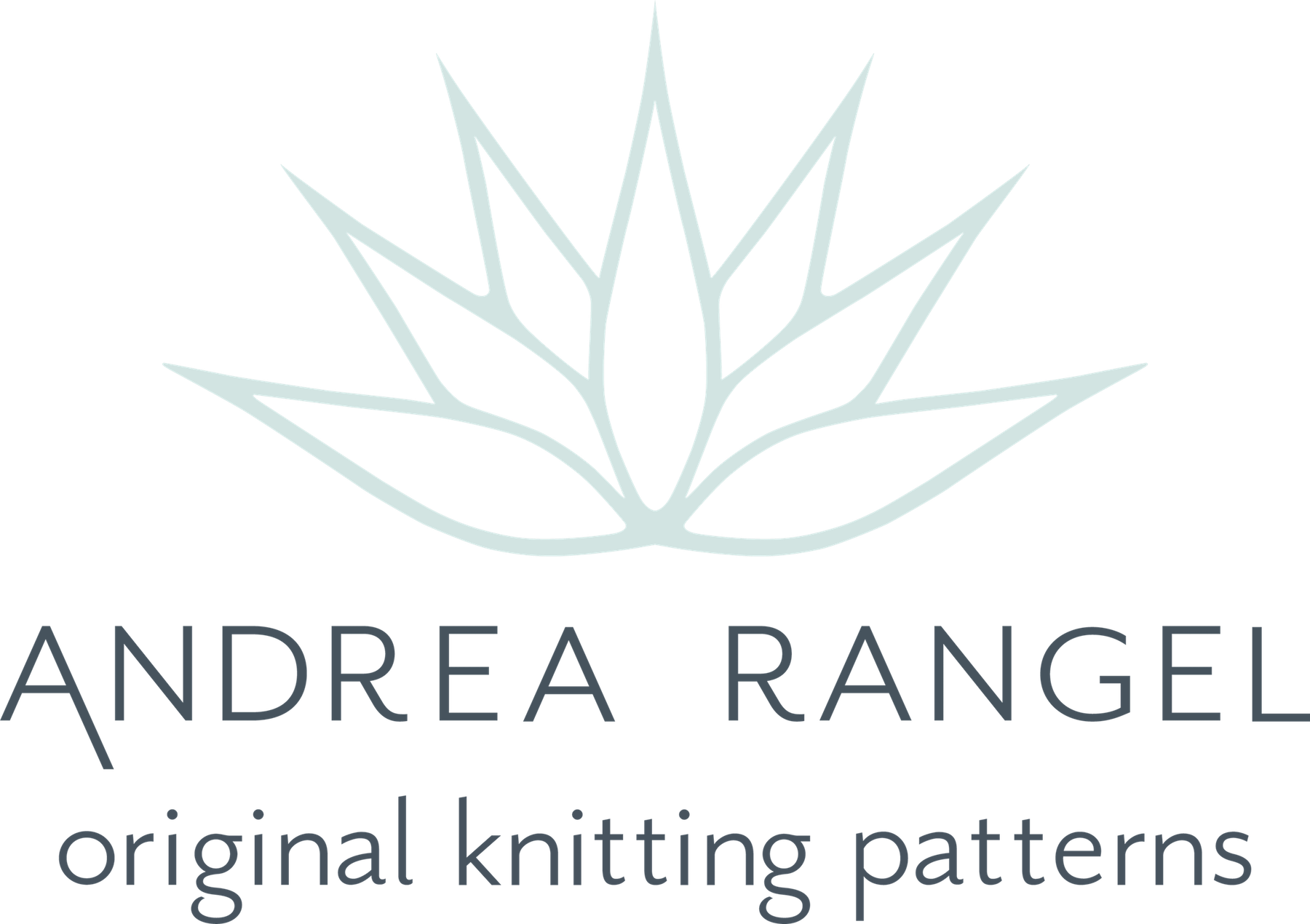Introducing Light Through the Leaves
I published my latest pattern, Light Through the Leaves, at the beginning of January as part of my birthday celebration! Here’s a bit more about it.
The Story
I found this very striking hot pink fingering yarn at the Lady Dye booth at Vogue Knitting Live and really felt compelled to knit with it right away. I swatched it up and really liked the depth of colour and just how much it pops, but I wasn’t sure what it wanted to be until I saw these skeins of Spincycle Dyed in the Wool in Verba Volant, a sweet soft pink with pops of yellow and neon green. Pink on pink, yes please! If you’ve been following my Instagram lately, you’ll know I’m just so feeling the pink (and gold yes!)
The first swatch I tried with these yarns together was just exactly what I wanted. I used a leaf motif from my book AlterKnit (Alder) and modified it to create a crown that just makes me think of stained glass or sunlight peeking through the forest canopy. So hot and pale pink + a nature theme = me indeed.
The Details
Light Through the Leaves is worked with a doubled brim, so you get a really squishy, cozy toque. I love how a doubled brim looks so neat along the bottom edge, and with a light fingering weight yarn like Lady Dye Superwash Fingering Weight Yarn, it’s not too bulky, just cozy! (To achieve the doubled brim, I use a handy provisional cast-on method that’s easy to remove when it’s time to join the cast-on edge to the live stitches.) Most of the hat is worked by just following charts, so the only page you have to pay attention to is the chart one.
Yarn Choice
I used Lady Dye Superwash Fingering Weight with Spincycle Yarns Dyed in the Wool. The Lady Dye is a fairly light singles, and I think this is a great project to use your special singles. Since a hat won’t receive a ton of wear or friction, it’s a great choice for a yarn that’s all about the colour and may not be super tough but is just gorgeous and soft. And I think you just can’t go wrong with Spincycle Yarns Dyed in the Wool. It’s such a versatile weight - I’ve paired it with a light fingering and with a sport weight and it does great with both. My recommendation is to look at the skein and be sure every colour in it is a strong contrast against your main colour so that your colour work shows up. If you want your leaf pattern to be more subtle, it’s okay to go with one that doesn’t have as much contrast, but of course be sure to swatch so you know you’ll be happy. If you’re not on board with the Spincycle yet or you want to use up some stash, grab that pretty speckled skein - any good fingering weight that contrasts with your main colour should be great for this pattern.
Want to learn more about the yarns I used? Check them out in The Swatch Project:
Get the pattern here on my website or over on Ravelry if you'd like to keep it in your Rav library.
Pattern Specs
Finished Measurements
Hat circumference: 19.5 (21) in/49.5 (53.5) cm
Hat length, top of crown to bottom of brim: 8.5 in/21.5 cm
Intended to be worn with about -1.5 in/4 cm of negative ease. Shown in size 19.5 in/49.5 cm.
Yarn
Fingering weight yarn in two colours
Colour A: 200 (235) yd/183 (215) m
Colour B: 150 (175) yd/137 (160) m
Shown in:
Colour A: Lady Dye Superwash Fingering Weight Yarn (100% superwash Merino wool; 425 yd/389 m per 100g skein)
Colour: Plush; 1 skein
Colour B: Spincycle Yarns Dyed in the Wool (100% superwash American wool; 200 yd/183 m)
Colour: Verba Volant; 1 skein
Blocked Gauge
Gauge measurement should be taken after blocking.
32 sts/36 rows = 4 in/10 cm in colourwork pattern
Needles & Notions
Needle Sizes are recommendations only. Always use needle size necessary to obtain gauge.
16 in/40 cm circular needles:
US 3/3.25 mm needle
US 5/3.75 mm needle
Set DPN’s, long circular needle for magic loop method, or other preferred small-circumference needles:
US 3/3.25 mm needle
US 5/3.75 mm needle
stitch markers
tapestry needle
waste yarn
spare 16 in/40 cm circular needle same size or smaller than the smaller needle
3.25 mm crochet hook
Skills
provisional cast-on, joining live stitches to provisional stitches, colour work from a chart, decreasing








